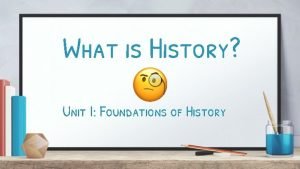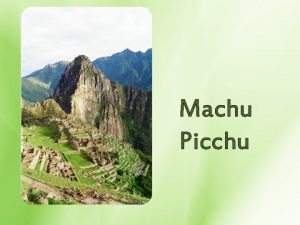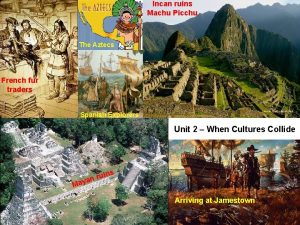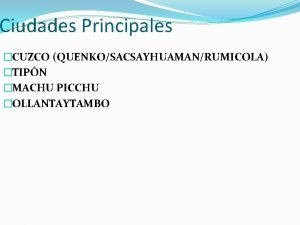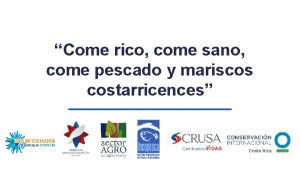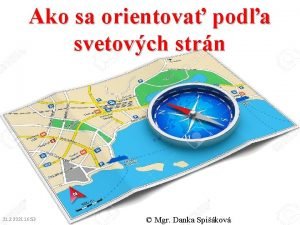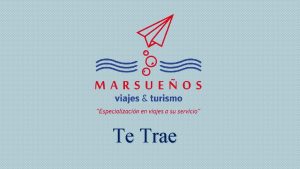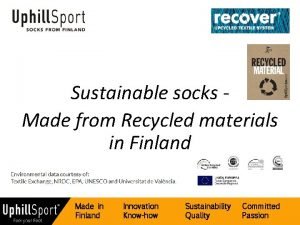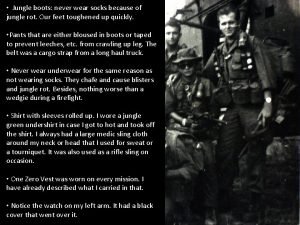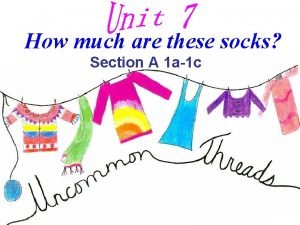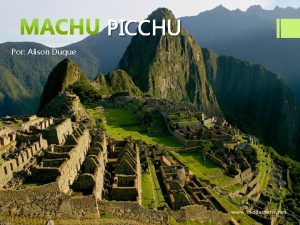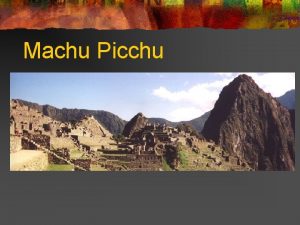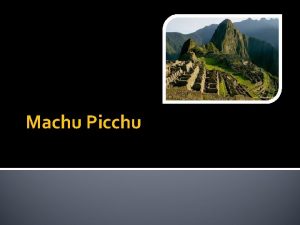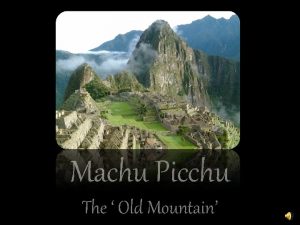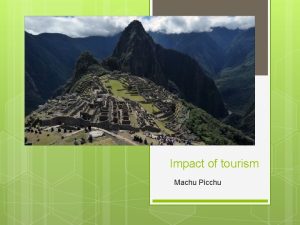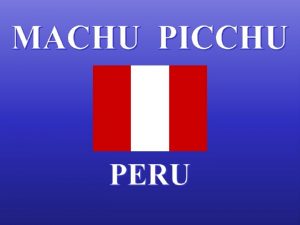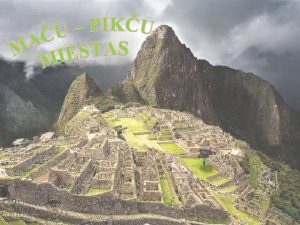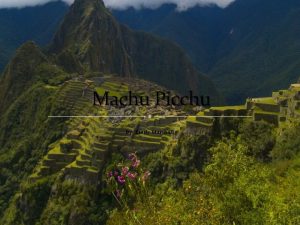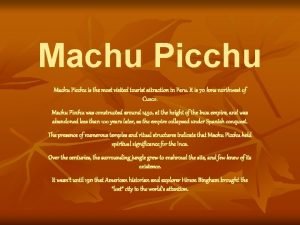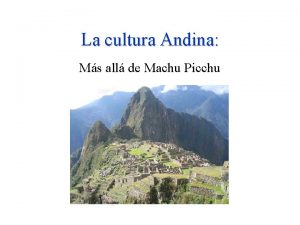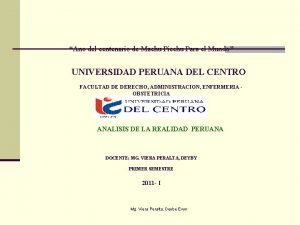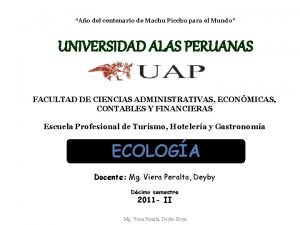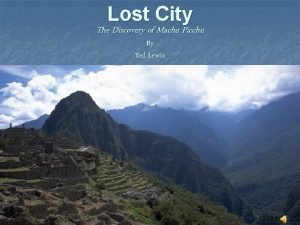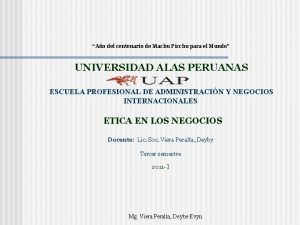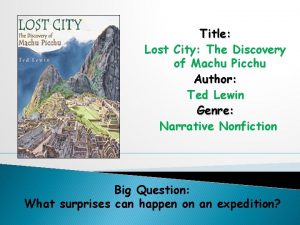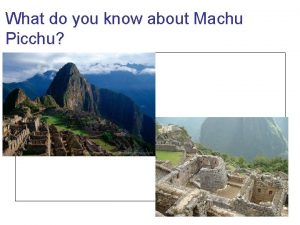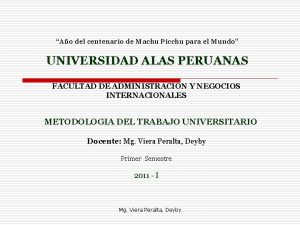Incas Come to Rock Your Socks Machu Picchu






















- Slides: 22

Incas: Come to Rock Your Socks Machu Picchu Ruins

Machu Picchu n https: //video. nationalgeographic. com/video/10 1 -videos/machu-picchu-101

Who are the Incas? n The Incas began as a small group of warlike people and grew into a large empire. They lived near Lake Titicaca (…yes you may laugh now ; ) in Southeastern Peru sometime before the 13 th century.

What do we know about the Incas Before the Spanish? n Where did they live? Lived in South America n In the Andes Mts. n n Who did they worship? Many godspolytheistic n Sun god was the most powerful n

Why the Mountains? n Mostly lived in the Andes Mountains and the southern most part of Peru. n Isn’t it harder to live in the mountains? Why live there? Any Advantages? Talk it out.

Who was Pachacuti Inca Upanqui? I just wanted to say that! n He was the 1 st Inca Ruler to establish himself as Emperor. (Limited or Unlimited? ) n He was known as the first Sapa, or “the only one” Statue of Pachacuti in Machu Picchu

Do you think Incas made changes (MODIFIED) in the environment? n Yes, they built terraces (broad, flat platforms) for farming and agriculture, built irrigation systems n They built roads out of stone and bridges across deep mountain gorges. Did this without big machines like we have today

Excellent Architecture

Technology Cont. n The Inca road system also allowed runners to carry messages long distances every day, allowing for a fast message system. Runners would carry the message to another runner who would then take the message to another one until the message had reached its destination. A message could travel up to 240 kilometers (150 miles) every day. (The Pony Express on Foot)

Who was Atahualpa? n He was the 13 th and last emperor of the Inca empire. n As emperor, he was captured by the Spanish conquistador Francisco Pizarro and executed in 1533 n His death signaled the end of the Inca empire.

Do they still exist? n Yes, of course. n Many of the descendants of the Incas still inhabit those lands of their ancestors. n Some still speak the Quechua language and perform many of their customs and beliefs.

Why do you suppose the Europeans Explored and Conquered countries in South America? n Spain and Portugal claimed most of the land its natural resources from the 1500 -1800’s. n Three G’s n God: They spread Roman Catholic Religion n Gold: They wanted to get RICH! n Glory: They wanted the respect and power of finding and controlling land.

Spanish Conquest Video https: //www. youtube. com/watch? v=1 P_euomd. HOU

What changes occurred due to the migration (and colonization) of the Europeans to South America? n In total, the conquest took about forty years to complete. n The Spanish conquest was achieved through relentless force, aided by factors like smallpox and advanced technology. n The Spaniards forced change in most of the Incan culture and introduced the Spanish culture to the native population n Lost language, religion, lots of other cultural characteristics culture n We do see some of the Ancient Inca Characteristics still today n Irrigation systems, style of dress, some even speak the old language

Sound Familiar? n Any of this sound like something we have discussed before? Talk it out.

Triangular Trade/ Columbian Exchange/ Trans-Atlantic Slave Trade n The movement of people, plants, animals, including cows and horses, and disease became know as the Columbian Trade. n The Atlantic Slave Trade is specifically about the transfer of slaves from Africa for labor (work) across the Atlantic Ocean during colonization. n We see their culture, such as music, food and dance in parts of South America today.

Spanish Bring Cattle and Horses! n Columbian Exchange introduced many new cultural changes : Examples of that are Cattle Ranches and Rodeos!

Inca Today- Blended Cultures: Describe the Spanish/Inca blended culture of today.

Machu Picchu Today! n https: //www. youtube. com/watch? v=Zk 9 J 5 xn. T VMA

Andes Mountains allowed the Incas and countries today protection from invasion from the west. So…What side of the Andes Mountains would you say is more protected? East or West? And why. Write this on your 3 B warm up page.

If we could do it all again… would we do it the same? n http: //www. uncontactedtribes. org/brazilfootage n Picture from 2010

Sources n Wikipedia n Cscope n http: //www. infoperu. com/pics/raymi 2002/0772 inca. jpg
 Machu picchu definition world history
Machu picchu definition world history Landmark machu picchu
Landmark machu picchu Meanwhile
Meanwhile Como fue construida machu picchu
Como fue construida machu picchu Similarities between inca maya and aztec
Similarities between inca maya and aztec Igneous and metamorphic
Igneous and metamorphic Mogan's cevicheria
Mogan's cevicheria Svetové strany anglicky
Svetové strany anglicky Machu pichu
Machu pichu Stielkaté rastliny
Stielkaté rastliny Come and listen
Come and listen Your kingdom come your will be done
Your kingdom come your will be done Rock cycle sedimentary
Rock cycle sedimentary Igneous metamorphic and sedimentary
Igneous metamorphic and sedimentary Climbing rock climbing
Climbing rock climbing Chapter 3 standardized test practice answers
Chapter 3 standardized test practice answers Chapter 3 standardized test practice answers
Chapter 3 standardized test practice answers Life cycle of a rock
Life cycle of a rock Recovertex
Recovertex Never wear socks
Never wear socks How much are these socks
How much are these socks George washington socks chapter 17
George washington socks chapter 17 George washington socks summary
George washington socks summary
